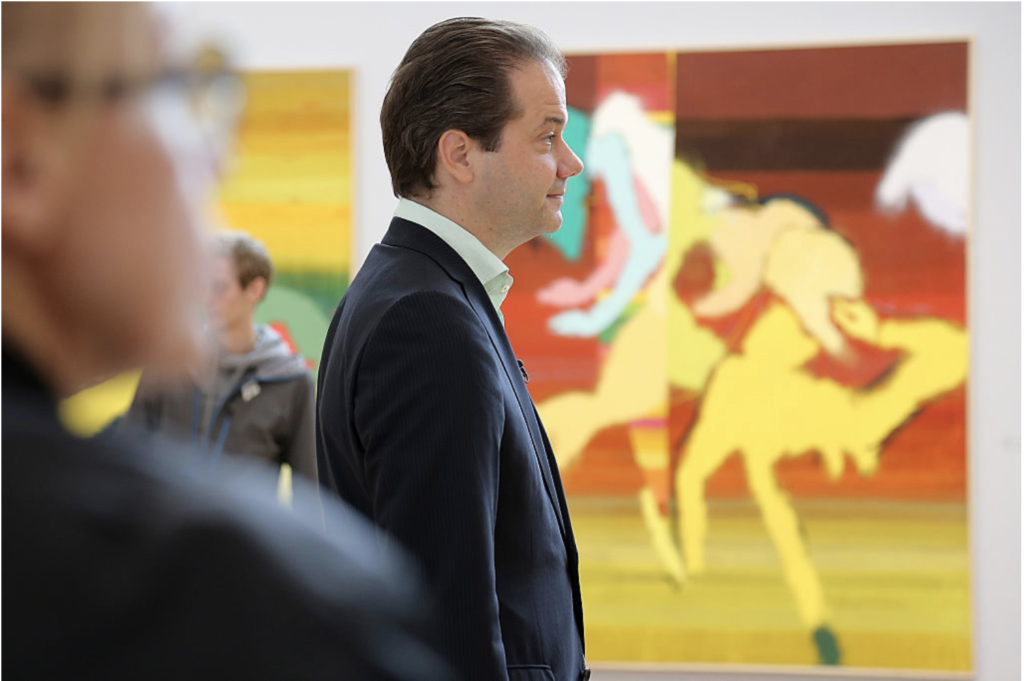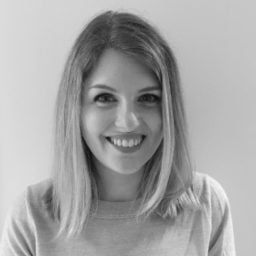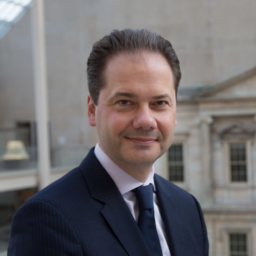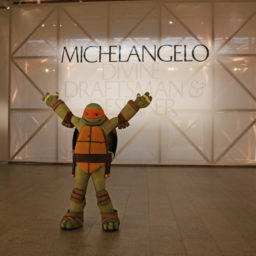At Frieze New York earlier this month, Max Hollein could be spotted quietly ducking into a booth to examine a painting by the American artist Forrest Bess. That he was wandering alone, unencumbered by the bevy of well-wishers one might expect to swarm the recently named director of the Metropolitan Museum of Art, is telling. Despite spending several years in New York at the beginning of his career, the seasoned museum leader remains something of an unknown quantity in the city.
If past performance is any indication, however, that won’t be the case for long. One can expect 48-year-old Hollein to hit the ground running when he officially begins his new role at the Met in August.

Max Hollein, image courtesy of the Fine Arts Museums of San Francisco.
One of the first items on the agenda: Introducing himself to the museum’s large, experienced, and deeply opinionated curatorial staff. Soon after the Austrian-born administrator arrived at the Fine Art Museums of San Francisco (FAMSF)—which comprises both the Legion of Honor and the de Young—two years ago, he scheduled meetings with every curator, from department heads on down to assistant curators. One of his first questions: What’s the dream exhibition you’ve always wanted to do, but never had the time or resources to pull off?
As Hollein prepares to leave San Francisco at the end of June, several of the ideas presented in those early meetings have already been realized—testifying to the director’s knack for lightning-fast turnarounds in a field known to move at a glacial pace. One such show, “Cult of the Machine,” a survey of the little-examined American Precisionist movement organized by two associate curators, is on view now at the de Young.
A Straight Talker
The same kind of comprehensive introduction will be essentially impossible at the Met, which has a curatorial staff of 110 people (compared to the FAMSF’s 18). But those who have worked with Hollein say he is likely to bring the same directness, can-do spirit, and what-are-we-waiting-for attitude to America’s largest encyclopedic museum.
“Max is an activator,” says Claudia Schmuckli, the FAMSF contemporary art curator who was one of the four major hires—notably, all women—that Hollein made during his relatively brief tenure in San Francisco. “He is quick to identify the growth potential of any situation, adjust the infrastructure accordingly, and get people on the inside and outside energized and engaged in the process.”
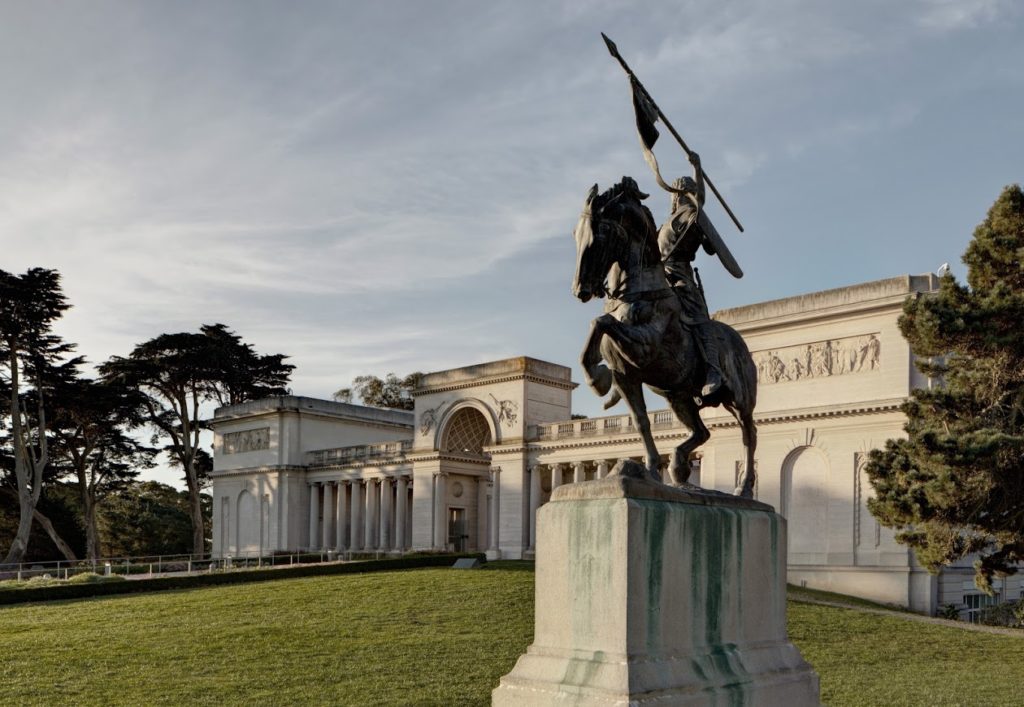
Legion of Honor in Lincoln Park, with Anna Vaughn Hyatt Huntington’s El Cid Campeador. Image courtesy of the Fine Arts Museums of San Francisco.
Indeed, throughout Hollein’s more than 20-year career in cultural institutions, one trait seems to be a striking constant: an ability to get people excited about what he is up to. “I don’t think he ever thinks that the word ‘no’ exists—and I love that about him,” says Dede Wilsey, the chair of the board at FAMSF who also served as CEO before relinquishing that title to Hollein.
Some observers were discouraged to see that the Met had chosen yet another white man to serve as director. (In an op-ed for the New York Times, the art historian Liza Oliver wrote: “His hiring sheds light on the implicit biases of museum culture that continue to inform what being ‘qualified’ means at the Met.”) But it is nearly impossible to find anyone who has worked with Hollein who has anything but glowing things to say about him.
Those who know him say he likes to generate ideas and tackle problems head-on, one-on-one, quickly slashing through unnecessary bureaucratic red tape. Among journalists, he has a reputation as a willing commentator who answers inquiries swiftly and directly—a rarity for a museum director. “He doesn’t want anyone between him and whoever he is dealing with, whether it’s a curator or CFO or whatever,” Wilsey observes. “He is the person in charge.”
It remains to be seen how this approach will land at the Met, an august institution where so much as a wall label requires many layers of approval. Unlike in San Francisco, where Hollein was both director and CEO, at the Met he will answer to the Met’s president and CEO, Daniel Weiss.
“I don’t know how it’s going to work for him because I think he’s used to being in charge,” Wilsey says, “but what I do know about Max is that if he didn’t think it would work, he wouldn’t have taken the job.”
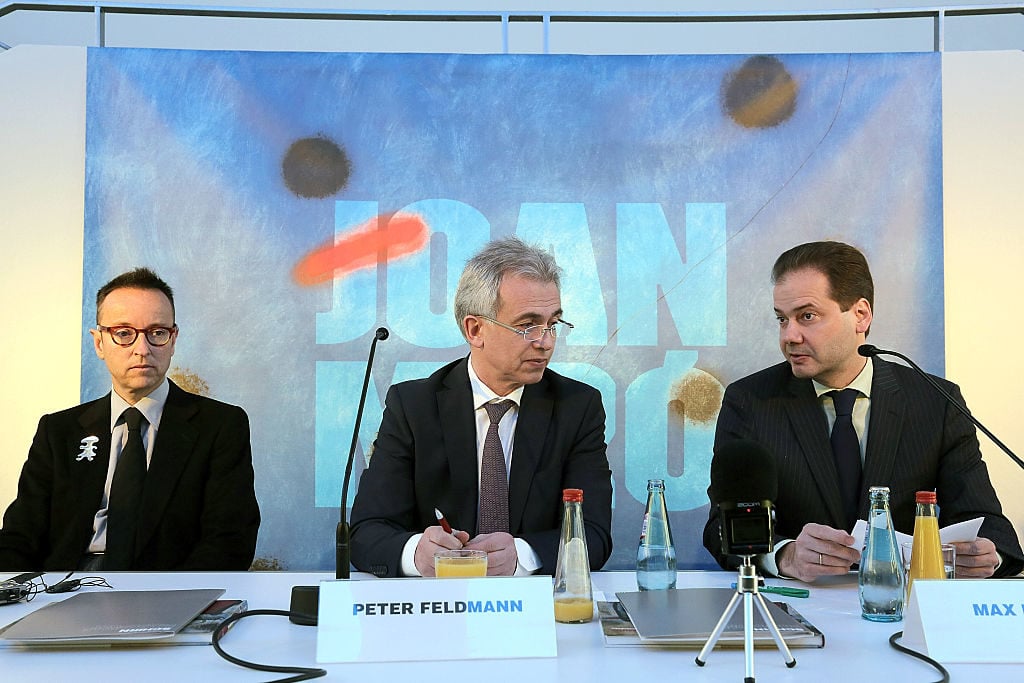
Joan Punyet Miró, grandson of Joan Miró; Peter Feldmann, mayor of Frankfurt; and Max Hollein, director of the Schirn Kunsthalle, during the preview of the exhibition ‘Joan Miró. Wandbilder, Weltenbilder’ at Schirn Kunsthalle in 2016. (Photo by Hannelore Foerster/Getty Images)
Steeped in Art
Hollein has culture in his blood. As the son of the Pritzker Prize-winning Austrian architect Hans Hollein, he grew up around artists and museum professionals—which gave him a significant head start when he decided to pursue a career in the arts. He has said that his act of filial rebellion was studying business administration as well as art history.
Thomas Krens, the former director of Solomon R. Guggenheim Museum, worked with the elder Hollein on an ultimately aborted Salzburg branch. He recalls that Hollein’s fashion-designer mother, Helene, suggested he hire her son as an intern when he was 21. Eventually, the young gun came aboard full-time, rising to become Krens’s chief of staff and manager of European relations at a time when the Guggenheim was beginning to spread its tentacles around the globe.
“Max learned to do not just a single job,” Krens says. “He had to juggle 25 jobs at once, dealing with different countries, trustees, artists—and find ways to pull all that together under a time pressure that considered today yesterday.”
Those six years at the Guggenheim proved formative for Hollein. He learned an American approach to fundraising—meaning one that was inventive and friendly to corporate sponsorship. He also played an important role in managing a long-term partnership with Deutsche Bank that produced a series of complex commissions by contemporary artists.
“He was very ambitious,” Krens recalls. “It was known from the beginning that he was not going to be a lifelong assistant or chief of staff. What he wanted to do was have the opportunity to develop his own platform.”
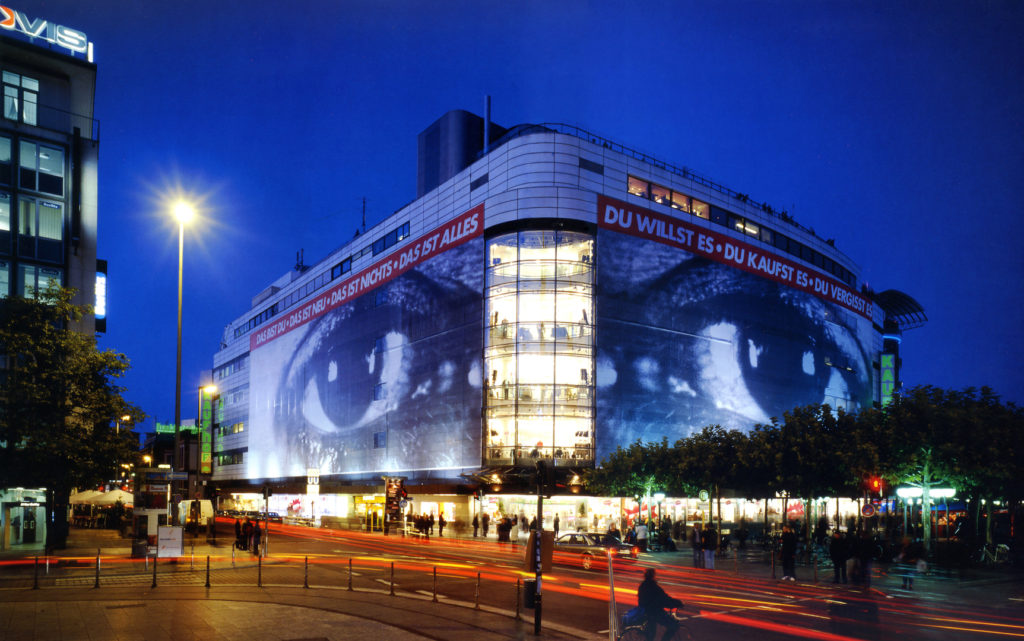
Installation view: “Shopping” (2002) on the façade of Galeria Kaufhof © Schirn Kunsthalle Frankfurt. The project was a partnership between the Schirn, a local department store, and artist Barbara Kruger.
Striking Out on His Own
Opportunity came knocking in 2001, when Hollein, then 31 years old, was invited to revive Frankfurt’s struggling Schirn Kunsthalle. At the time, attendance and public interest was so low that local politicians were debating closing the space completely—but Hollein swiftly reversed the museum’s trajectory. He boosted attendance with an ambitious exhibition program and major public commissions like a giant Barbara Kruger mural plastered around a department store building, which doubled as an advertisement for an exhibition about art and consumer culture.
Years later, the German newspaper Die Zeit called the Schirn “the most exciting exhibition hall in Germany.”
In 2006, while still leading the Schirn, Hollein broadened his portfolio by also taking over the Städel Museum, whose collection covers late medieval to contemporary art, and the Liebieghaus sculpture collection, known for its holdings of early Egyptian to classical sculpture. He quickly beefed up the former’s contemporary art program and began raising money to build out the museum to contain his growing program. Half of the €52 million budget for the expansion came from private donors, a rarity in Germany.
“Fundraising in Frankfurt isn’t easy, and even there he succeeded in building relationships and raising the funds to build an extension for the museum,” notes the art dealer (and fellow Austrian) Thaddaeus Ropac. “But more than this, he succeeded in building a sense of shared responsibility in a culture where it didn’t really exist before.” This savvy will come in handy at the recently financially troubled Met, which is working to rebalance its budget by 2020.
Similarly, in San Francisco, where emerging tech titans have less of a history of cultural philanthropy than other captains of industry, Hollein has been playing a long game. “With these young billionaires, if you don’t give them something to do right away, they lose interest,” Dede Wilsey says. “He asked for equipment, digital resources right away—and they said yes right away.” (A representative for FAMSF says this initiative is still in the planning stages.)
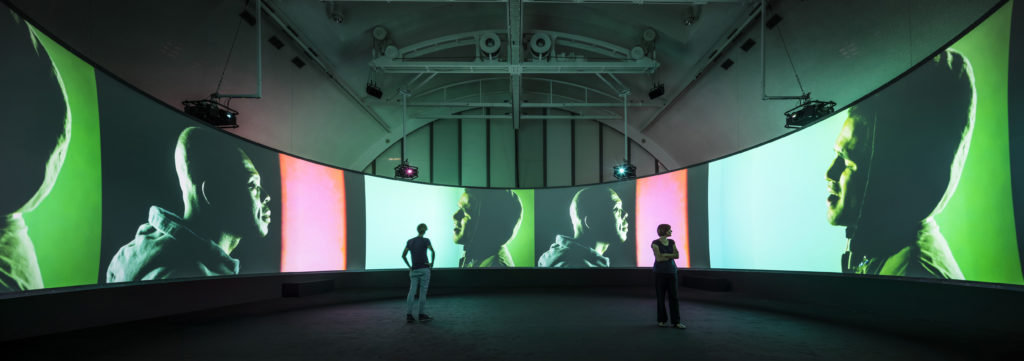
Installation view of “DOUG AITKEN” (Song One) © Schirn Kunsthalle Frankfurt, 2015, Photo: Norbert Miguletz.
An Artist’s Favorite
Hollein seems equally comfortable talking shop with artists at downtown dive bars as he is schmoozing donors at elegant dinners. “He manages to stay very structured and relaxed at the same time,” says the artist Erwin Wurm, who worked with Hollein on a project at the Städel.
The artist Doug Aitken recalls first meeting Hollein when he was in his early 20s and both were living in New York. “I’d go for a meal or a drink and Max would be there,” he recalls. “We had some really good conversations about art. It seemed he was one of us. The only difference was that he was better dressed.” He describes Hollein as “one of the few directors who really understand artists.”
Decades later, in San Francisco, Hollein also impressed the artist Lynn Hershman Leeson, who first met the director’s father in 1973 when they were on a panel with artist Joseph Beuys. During a studio visit after his arrival in California, the younger Hollein found the two shared a love of the Austrian post-punk band Hotel Morphila Orchester. They hit it off immediately.
Hershman Leeson says Hollein’s impact on the city will linger long after he has moved east. “He opened the window and the fresh air brought seismic shifts of perception and reimagining possibilities for artistic impact,” she says. “It was tremendous.”
She recalled a recent conversation she had had with Aitken about the rising director. “We agreed that though he wore a suit,” she says, “Max had the instincts of an artist.”
This sensitivity and mutability will serve him well at an institution that has one of the largest endowments of any American cultural institution but has in the past year weathered a series of controversies that strained its relationship to the public, from the tumultuous departure of its previous director Thomas Campbell to its heavily criticized decision to begin charging $25 admission to out-of-state visitors. Even more recently, debate has swirled over the propriety of the museum’s Catholic-themed Costume Institute show.
“Large museums like the Met have many stakeholders, internal and external, sometimes with opposite interests,” notes Wim Pijbes, the former director of the Rijksmuseum in Amsterdam. “The biggest challenge will be to find the right balance in keeping everybody happy and realizing your own ambition.”
Additional reporting by Javier Pes
